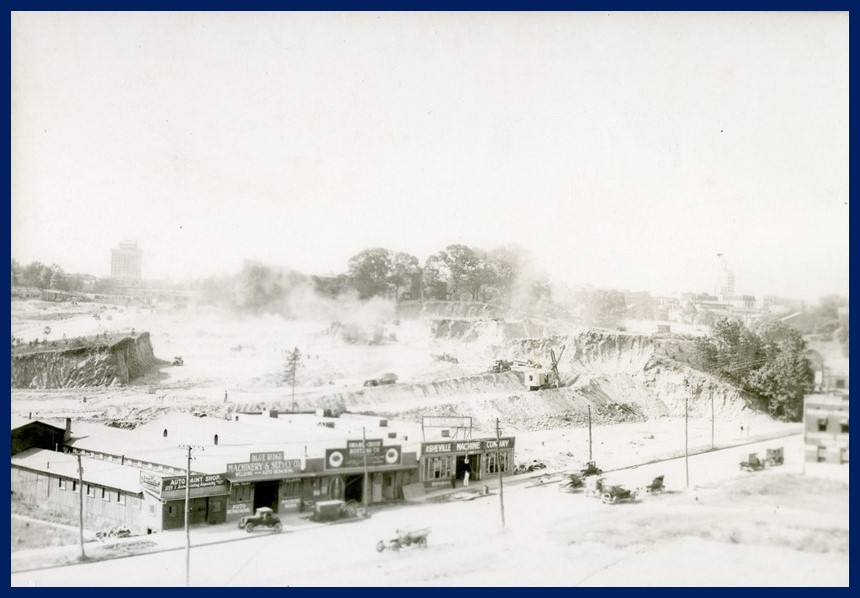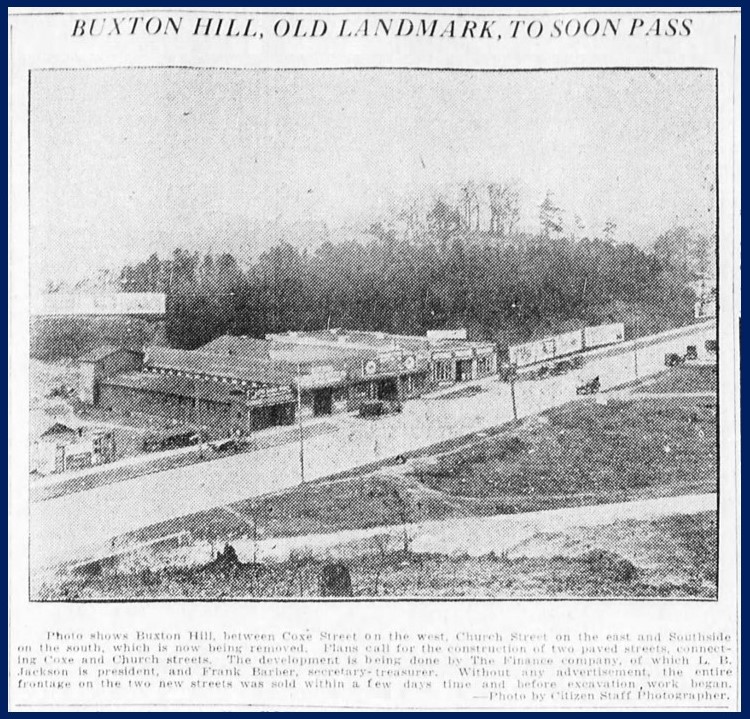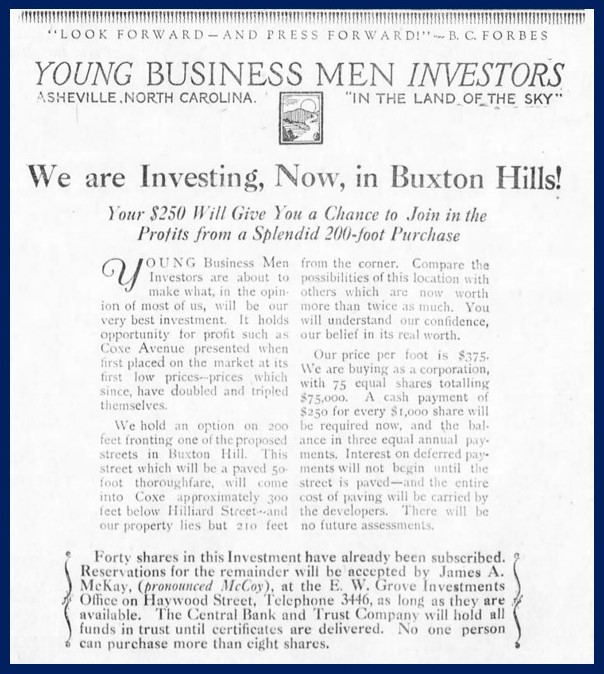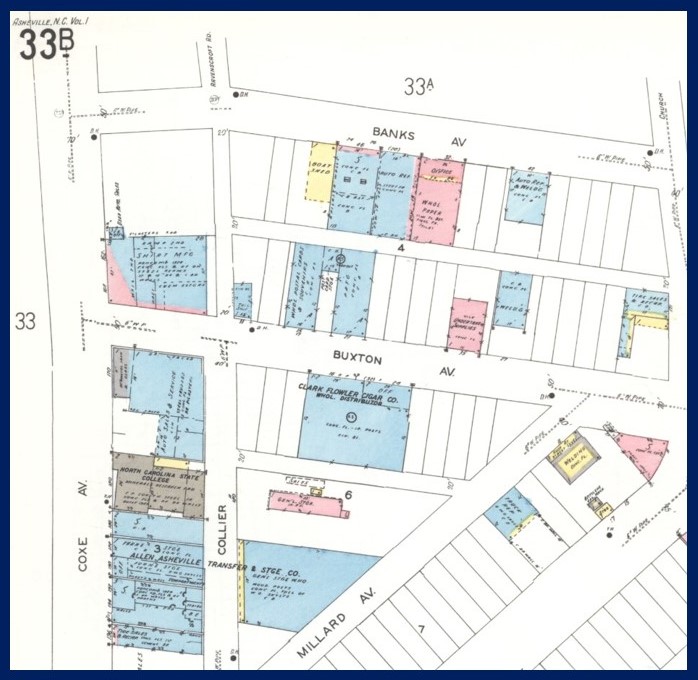
On this day in WNC history: One of the only constants in a city is change; 1920s Asheville was a prime illustration. On this day in 1926, excavators and trucks were at work literally transforming the landscape of the city, removing Buxton Hill and preparing to develop the land along Asheville’s South Slope.
Just two years prior, E.W. Grove financed the demolition of the old Battery Park Hotel and razed Battery Hill to construct his new hotel and arcade. The same year, Asheville’s first skyscraper—the Jackson Building—arose on the edge of Pack Square. The next year, as financial and economic optimist boomed, the city routed and paved the new Coxe Avenue as a north/south thoroughfare. As the clamor of growth pushed outward, the tree-covered hill below the Ravenscroft School and adjacent to the new Coxe Avenue stood as one of the last obstacles to progress.
In late 1925, the plainly-named “Finance Company” gained a charter and began purchasing parcels in the area from sisters Lily and Mary Buxton, daughters of Rev. Jarvis Buxton who founded Ravenscroft as an Episcopal theological school in the 1850s. The Buxtons sold one six-acre parcel for $100,000 (nearly $1.5 million in 2021 dollars). Asheville created the new Buxton and Banks avenues in this flattened area, while the resulting lots changed hands between the Finance Company and the Buxton Hill Improvement company several times. A 1925 Sanborn map shows the numerous businesses—including a cigar wholesaler, auto repair shop, and undertaker supply building—already planned for this area. Today, the cut dirt bank at the top of Banks Avenue serves as a reminder of this rapid moment of change.
1926 demolition—Note the Battery Park Hotel (top left) and Jackson Building (top right), courtesy Buncombe County Special Collections, Pack Memorial Library
1925 photo with Coxe Avenue (center), courtesy Buncombe County Special Collections, Pack Memorial Library
Asheville Citizen, Jan 21, 1926
Asheville Citizen, Jan 26, 1926
1925 Asheville Sanborn map, Library of Congress




